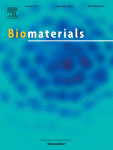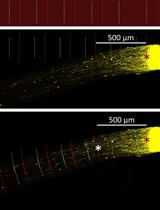- EN - English
- CN - 中文
In vitro Intestinal Epithelial Wound-healing Assays Using Electric Cell-Substrate Impedance Sensing Instrument
利用细胞阻抗测试传感器进行体外肠上皮伤口愈合检测
发布: 2019年09月05日第9卷第17期 DOI: 10.21769/BioProtoc.3351 浏览次数: 4771
评审: Khyati Hitesh ShahAnne-Marie Caroline OverstreetMichael T Veling
Abstract
Here, we describe an in vitro epithelial wound-healing assay using Electric Cell-Substrate Impedance Sensing (ECIS) technology. The ECIS technology is a real time cell growth assay based on a small (250 μm diameter) active gold electrode which resistance is measured continuously. When intestinal epithelial cells reach confluency on the gold electrode, resistances reach a plateau. For the wound-healing assays, confluent intestinal epithelial monolayers are subjected to a current of 40 kHz frequency, 1,400 μA amplitude, and 30-second duration. This kills the cells around the small active gold electrode, causing detachment and generating a wound that is healed by surrounding cells that have not been submitted to the current pulse. Wound healing is then assessed by continuous resistance measurements for approximately 30 h after wound. Both cell wounding and measurements of the subsequent healing process are carried out under computer control that takes online measurements each 30 s and stores the data. ECIS technology can be used to study the underlying causes for impaired mucosal healing and to test the efficacy of drugs in mucosal healing.
Keywords: Electric Cell-Substrate Impedance Sensing (细胞阻抗测试传感器)Background
Damage and impairment of the intestinal surface barrier are observed in the course of various diseases including Ulcerative Colitis (UC). Such characteristics may result in an increased penetration and absorption of toxic and immunogenic factors into the body leading to inflammation, uncontrolled immune response, and disequilibrium of the homeostasis of the host. Wound-healing assays in tissue culture have been used for many years to estimate the migration and proliferation rates of different cells under various culture conditions. These assays involve using instruments such as razor blades to “wound” a confluent monolayer of cells. The main disadvantages of these assays include a lack of reproducibility and an inability to precisely quantify wound healing. Here, we describe the ECIS technology, a non-invasive technique which monitors live cells in situ and in real time, which is an ideal cell-based system for the screening of potential drugs capable of achieving higher mucosal healing rates that provide significant clinical benefit for Ulcerative Colitis patients.
Materials and Reagents
- 75 cm2 Tissue culture flasks (Greiner Bio-One, catalog number: 658170)
- 2- and 10-ml plastic pipettes (Sigma-Aldrich, catalog number: CLS4101)
- Pipet Tip, Pipetman, PK1000 (Grainger, catalog number: 52jy20)
- InvitrogenTM CountessTM Cell Counting Chamber Slides (Thermo Fisher Scientific, Invitrogen, catalog number: C10312)
- Epithelial cell line Caco2-BBE or C2BBe1 (ATCC, catalog number: ATCC® HTB-37TM)
- DMEM (1:1) 1x medium (Thermo Fisher Scientific, Gibco, catalog number: 12634010)
- Fetal Bovine Serum (FBS) Premium Heat Inactivated at 56 °C (Atlanta Biologicals, catalog number: S11050H)
- Penicillin-Streptomycin (Pen/Strep) (Thermo Fisher Scientific, Gibco, catalog number: 15140122)
- Phosphate Buffered Saline (PBS 1x) (Thermo Fisher Scientific, Gibco, catalog number: 10010049)
- 0.25% Trypsin-EDTA (1x) (Thermo Fisher Scientific, Gibco, catalog number: 25200056)
- InvitrogenTM Trypan Blue Stain (0.4%) (Thermo Fisher Scientific, Invitrogen, catalog number: T10282)
- Recombinant Human IL-22 Protein (R&D Systems, catalog number: 782-IL10)
- Cell culture medium (see Recipes)
- IL22 stock (see Recipes)
Equipment
- PIPETMAN Classic P1000 (Gilson, catalog number: FA10006M)
- Drummond Scientific Pipet-Aid® Portable XP w/110 V recharger (Drummond Scientific, catalog number: 4-000-100)
- Laminar Flow Hood (LabGard Class II type A2 Biological Safety Cabinet, Nuaire, model: NU-540)
- Thermo Scientific 3110 CO2 Water Jacketed Incubator (Thermo Fisher Scientific, model: 4120)
- Digital Water Bath (VWR, catalog number: 89501-460)
- Nikon Eclipse TS100 inverted microscope (Nikon, model: Eclipse TS100)
- CountessTM automated cell counter (Thermo Fisher Scientific, Invitrogen, catalog number: AMQAF1000)
- ECIS Zθ (Theta and 16 W array station (Applied Bio Physics, https://www.biophysics.com/products.php) (Figure 1)
- CO2 Compact Tissue Culture Incubator (Shel Lab, Model SCO5A) (Figure 1)
- 8W10E+ Cultureware (Ibidi, catalog number: 72001) (Figure 2)
- OptiPlex 7760 All-in-One (6 Cores/9MB/6T/up to 4.1GHz/65W) (Dell)

Figure 1. ECIA Zq (Theta) and 16 W array station (inside the CO2 Compact tissue culture incubator)
Figure 2. 8 Well arrays “8W1E”. Each of the 8 wells contains a single circular 250 μm diameter active electrode (dot at the end of the blue arrow). Each well has a substrate area of 0.8 cm2 and a maximum volume of 500 μl.
Software
- ECIS Z software (https://www.biophysics.com/products-ecisz0.php)
- Microsoft Office Excel (Microsoft)
Procedure
文章信息
版权信息
© 2019 The Authors; exclusive licensee Bio-protocol LLC.
如何引用
Merlin-Zhang, O., Sung, J. and Viennois, E. (2019). In vitro Intestinal Epithelial Wound-healing Assays Using Electric Cell-Substrate Impedance Sensing Instrument. Bio-protocol 9(17): e3351. DOI: 10.21769/BioProtoc.3351.
分类
细胞生物学 > 基于细胞的分析方法 > 创伤修复
您对这篇实验方法有问题吗?
在此处发布您的问题,我们将邀请本文作者来回答。同时,我们会将您的问题发布到Bio-protocol Exchange,以便寻求社区成员的帮助。
Share
Bluesky
X
Copy link











